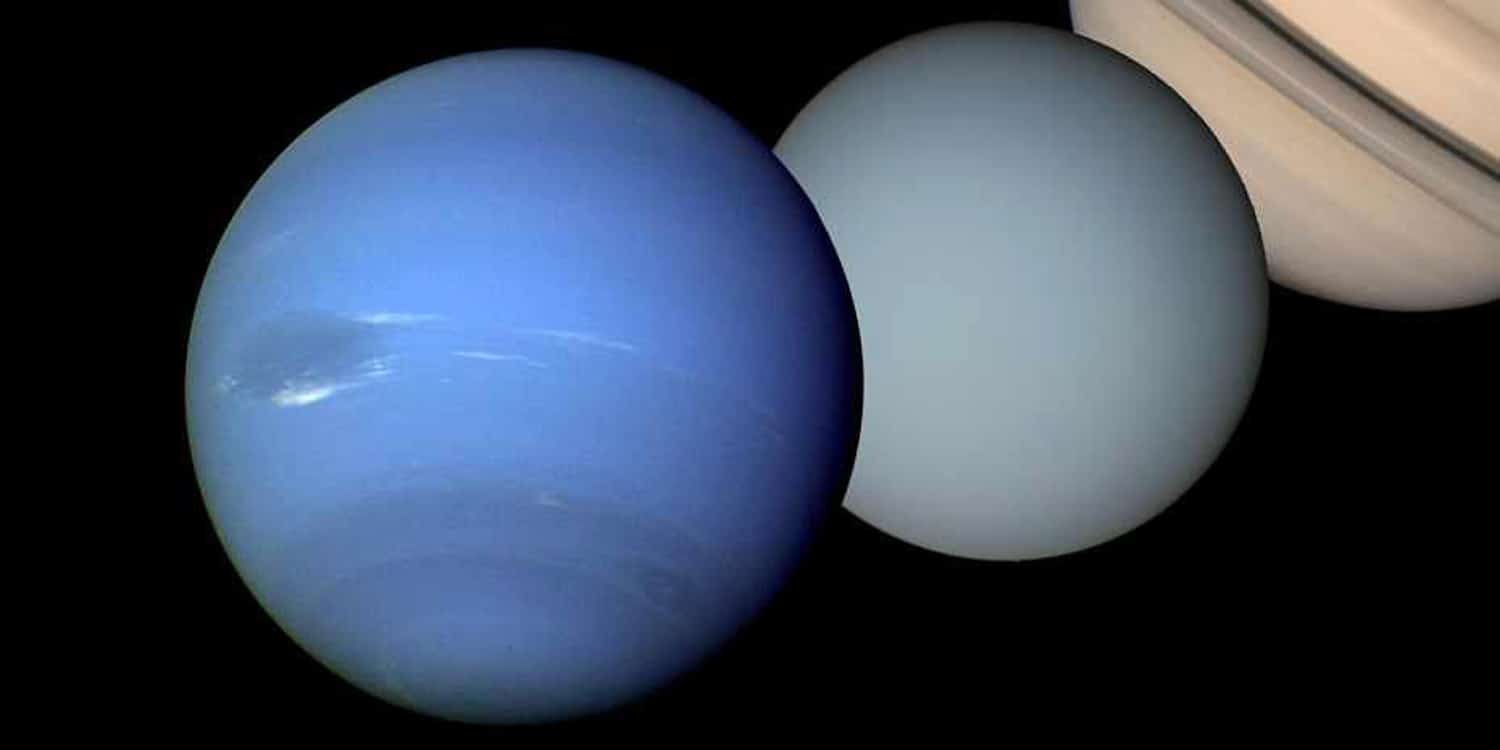What Neptune and Uranus Actually Look Like: Unveiled in New Images

January 4, 2024
The validation of this article was carried out under the qualified guidelines of Science X. A detailed analysis by seasoned editors confirmed credibility based on the following standards:
- fact-checked
- peer-reviewed publication
- trusted source
- proofread
by the University of Oxford
The two gas giants, Neptune and Uranus, usually identified for their distinct blue and green hues, respectively, have been found to be more similar in color than originally thought.
Professor Patrick Irwin of the University of Oxford led the research aimed at determining accurate shades of the two planets. The published outcomes can be found in the Monthly Notices of the Royal Astronomical Society.
Professor Irwin's team concluded both planets are a more similar shade of greenish-blue, challenging the common belief that Neptune is a deep azure and Uranus a light cyan.
For a long time, astronomers have known that modern images of Uranus and Neptune do not correctly portray their true colors. This misunderstanding occurred due to single-color images of both planets, captured during the 20th century by NASA's Voyager 2 mission, and later combined digitally to create layered colored images that distorted true color representation.
In many cases, the balancing process to achieve a 'true' color image was not accurate, and Neptune's colors would often appear 'too blue.'
Voyager 2 images of Neptune were also significantly contrast-enhanced to reveal its clouds, bands, and winds, which shaped our present impression of the planet.
Professor Irwin admitted that the original images of Neptune were enhanced and therefore made artificially too blue, 'Even though the artificially-saturated color was known at the time among planetary scientists and the images were released with captions explaining it, that distinction had become lost over time. Using our model on the original data, we have now been able to deliver a closer representation of Neptune and Uranus's color.'
The research team used continuous spectrum data from the Hubble Space Telescope's Space Imaging Spectrograph (STIS) and the Multi Unit Spectroscopic Explorer (MUSE) on the European Southern Observatory's Very Large Telescope. These data supported the true color approximation for Uranus and Neptune, and was applied to correct Voyager 2's camera images as well as the Hubble Space Telescope's Wide Field Camera 3 (WFC3) images.
This extensive study showed that Uranus and Neptune are indeed more alike and are shades of greenish-blue. A slight blue tint in Neptune is due to a thinner haze layer on the planet and is the single differing factor.
The researchers also discovered that Uranus's color changes slightly during its 84-year solar orbit. Comparing its images to the planet's brightness measurements, recorded by the Lowell Observatory in Arizona between 1950-2016, the researchers found that during its solstices, Uranus appears greener, and during equinoxes, it displays a bluer hue.
This unusual variance in color is due to Uranus's unique spin, with its poles directly pointing towards the sun and Earth during the solstices. Hence, any changes in polar region reflectivity would significantly affect Uranus's overall brightness from Earth's perspective.
The researchers determined that the polar regions reflected more at green and red wavelengths than blue, due to reduced methane levels. The researchers also proposed a new variable — a gradually thickening icy haze over the pole — to explain the color change.
Astronomers think this is likely to be made up of methane ice particles. When simulated in the model, the ice particles further increased the reflection at green and red wavelengths at the poles, offering an explanation as to why Uranus is greener at the solstice.
Professor Irwin said, 'This is the first study to match a quantitative model to imaging data to explain why the color of Uranus changes during its orbit. In this way, we have demonstrated that Uranus is greener at the solstice due to the polar regions having reduced methane abundance but also an increased thickness of brightly scattering methane ice particles.'
Dr. Heidi Hammel, of the Association of Universities for Research in Astronomy (AURA), who has spent decades studying Neptune and Uranus but was not involved in the study, said, 'The misperception of Neptune's color, as well as the unusual color changes of Uranus, have bedeviled us for decades. This comprehensive study should finally put both issues to rest.'
The ice giants Uranus and Neptune remain a tantalizing destination for future robotic explorers, building on the legacy of Voyager in the 1980s.
Professor Leigh Fletcher, a planetary scientist from the University of Leicester and co-author of the new study, said, 'A mission to explore the Uranian system—from its bizarre seasonal atmosphere, to its diverse collection of rings and moons—is a high priority for the space agencies in the decades to come.'
However, even a long-lived planetary explorer, in orbit around Uranus, would only capture a short snapshot of a Uranian year.
'Earth-based studies like this, showing how Uranus's appearance and color has changed over the decades in response to the weirdest seasons in the solar system, will be vital in placing the discoveries of this future mission into their broader context,' Professor Fletcher added.
Journal information: Monthly Notices of the Royal Astronomical Society
Provided by University of Oxford




